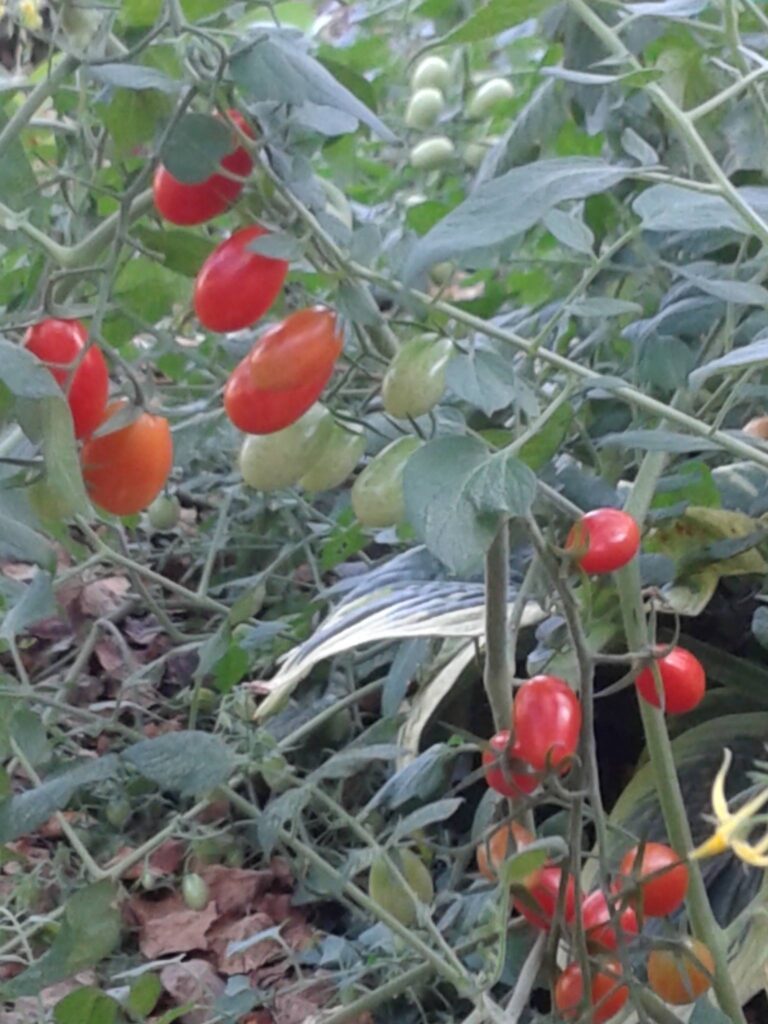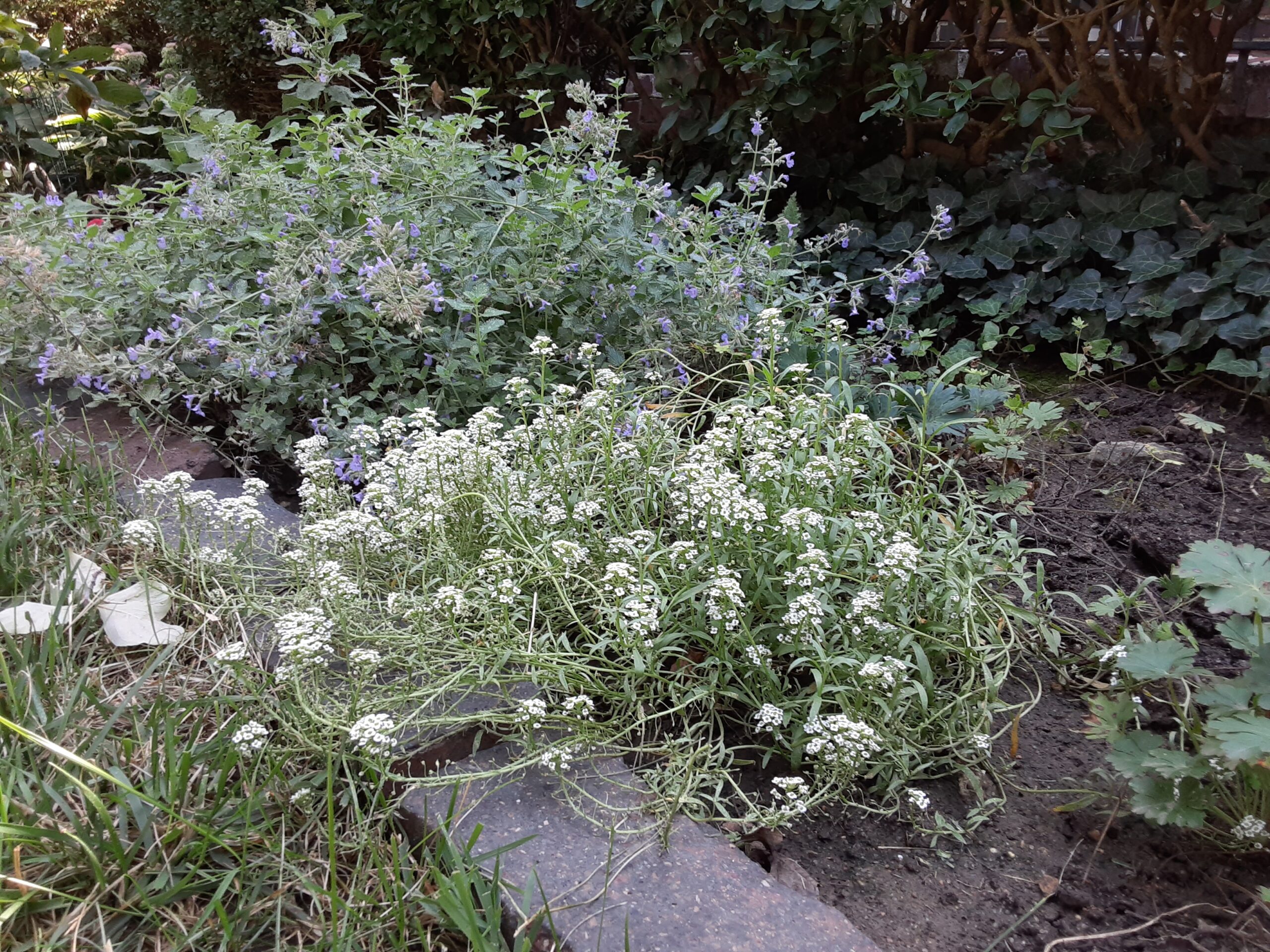What should we be doing in the garden this week? Honestly, I have no idea. I’m new to this. I don’t know what I’m doing. I’m afraid that if I dig things up and move them around, I’ll kill them. I have a long history of making ridiculous mistakes—like when I first started gardening and tried growing tomatoes from seed. I read that I needed to plant them in some medium other than soil, so I scattered the seeds in a tray of sheep manure, dampened it, and put it in my gas oven. I thought that the warmth from the pilot light would coax them into sprouting. It did not. No one who lived in my apartment building will ever forget that experiment.
For a long time, my garden had no budget and no plan—but it did have plants. Many popped up on their own and reproduced aggressively, like rose of Sharon, rose, oregano. For a while the garden’s theme was “found plants.” I have many that people threw away and I brought home and planted—like day lilies and irises from our neighborhood’s entrance plantings, and astilbe I rescued from a neighbor’s yard waste bag. When professional landscapers dug up the peonies that grew along the neighbor’s fence like a pink ruffle, I took some.
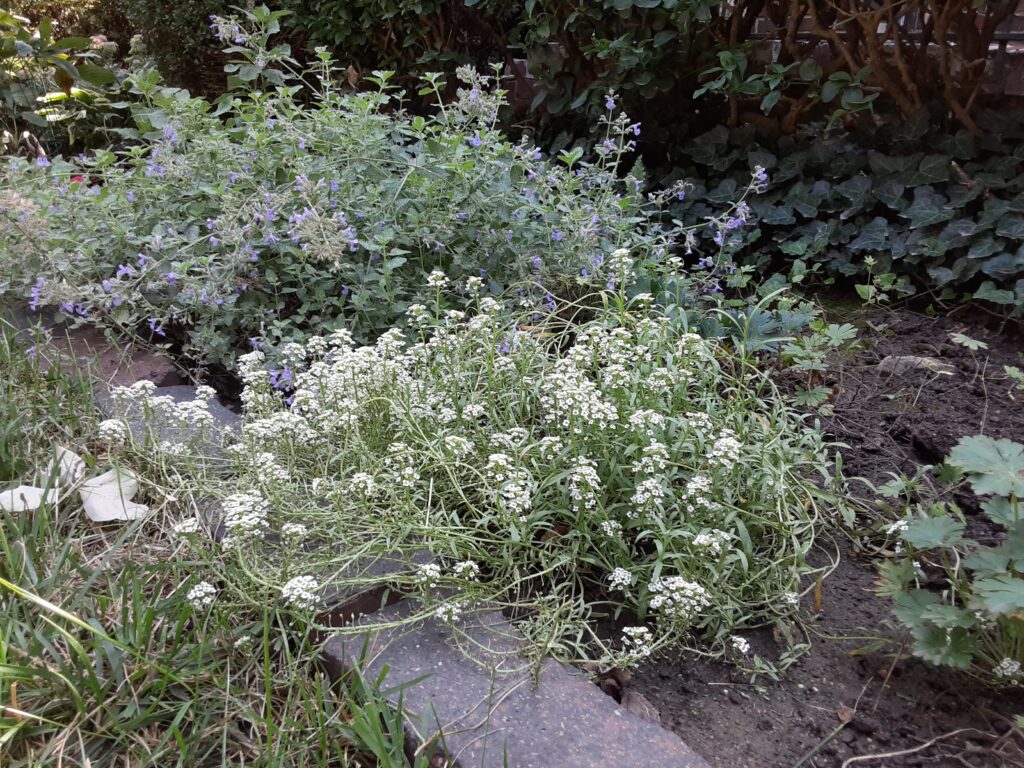
Sometimes they sprout in less-than desirable places but I don’t have the heart to kill them.
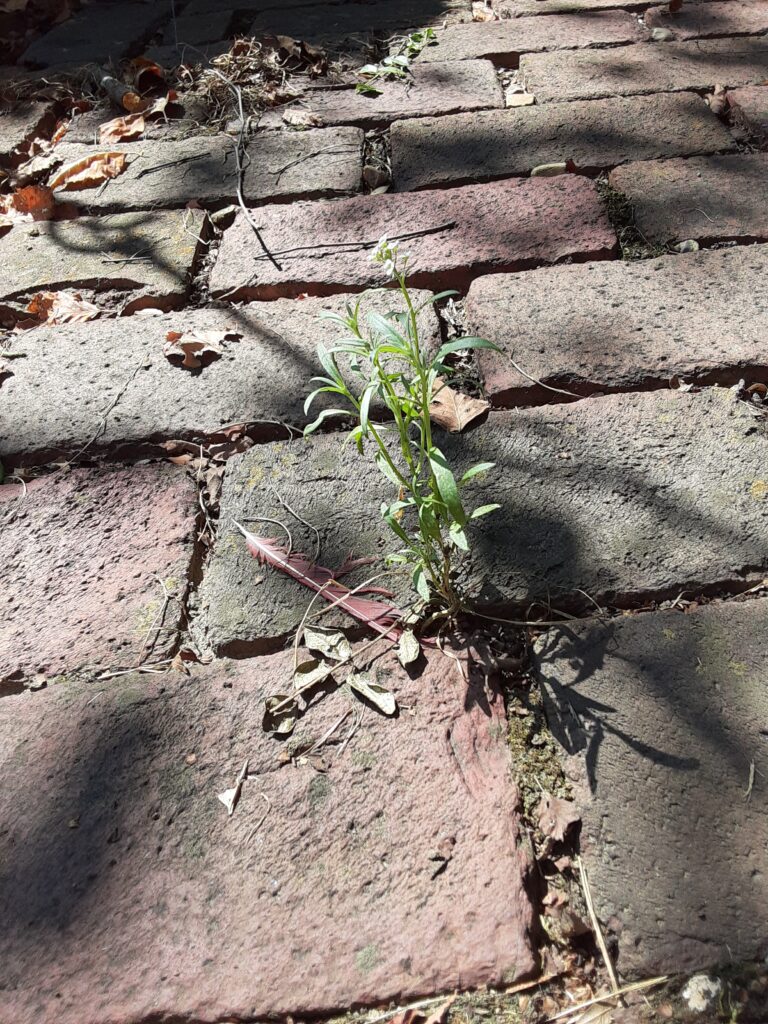
What a bonus, right? Mine really is a wild garden. As George Orwell says, “The pleasures of spring are available to everybody and cost nothing.” That’s true of all the seasons, and of gardening too. The value plants bring us cannot be measured in dollars. However, although I must have wanted these plants at some time, I don’t anymore. I don’t like where they are. Even plants I’ve purchased are growing in the wrong place now. My garden is a wild weed patch.
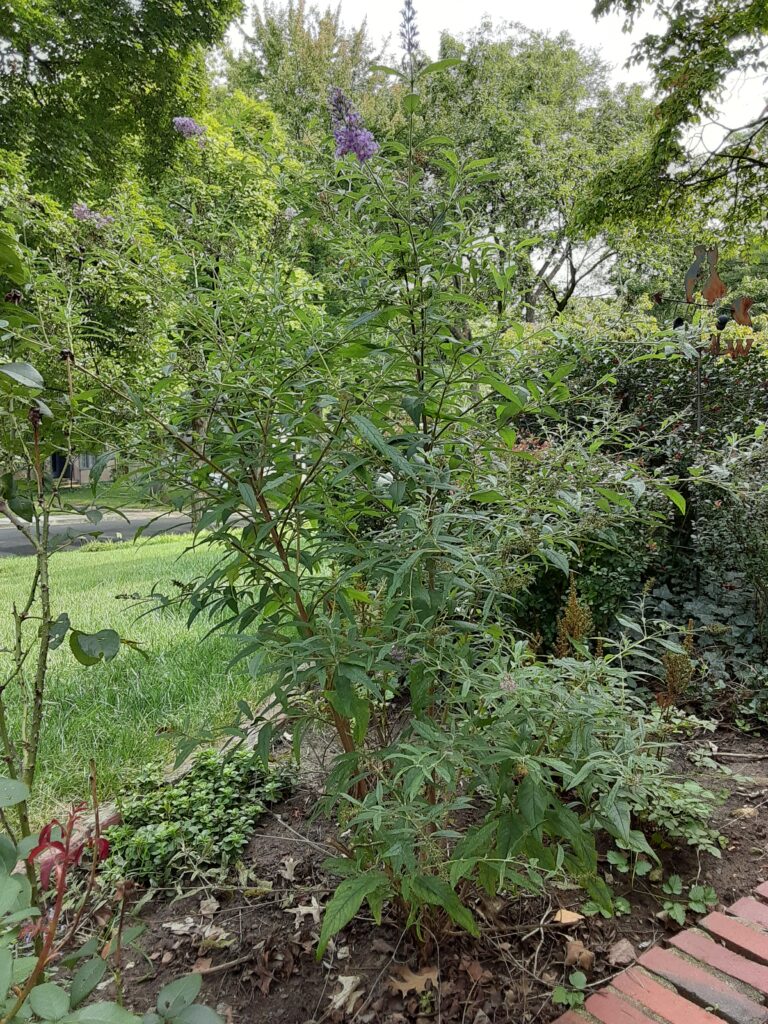
I find it hard to understand that anyone would actually buy a butterfly bush. The butterflies love them, though, so I haven’t had the heart to cut mine down.
What can I do?
I can learn to move things. I can Google. I can read. I can ask. I can risk.
I’ve got to be willing to risk failure. I don’t like killing things. It goes against my grain. I’m programmed to help things grow. But as with a lot of questions, when we surrender control, we surrender to aggressive forces we don’t want.
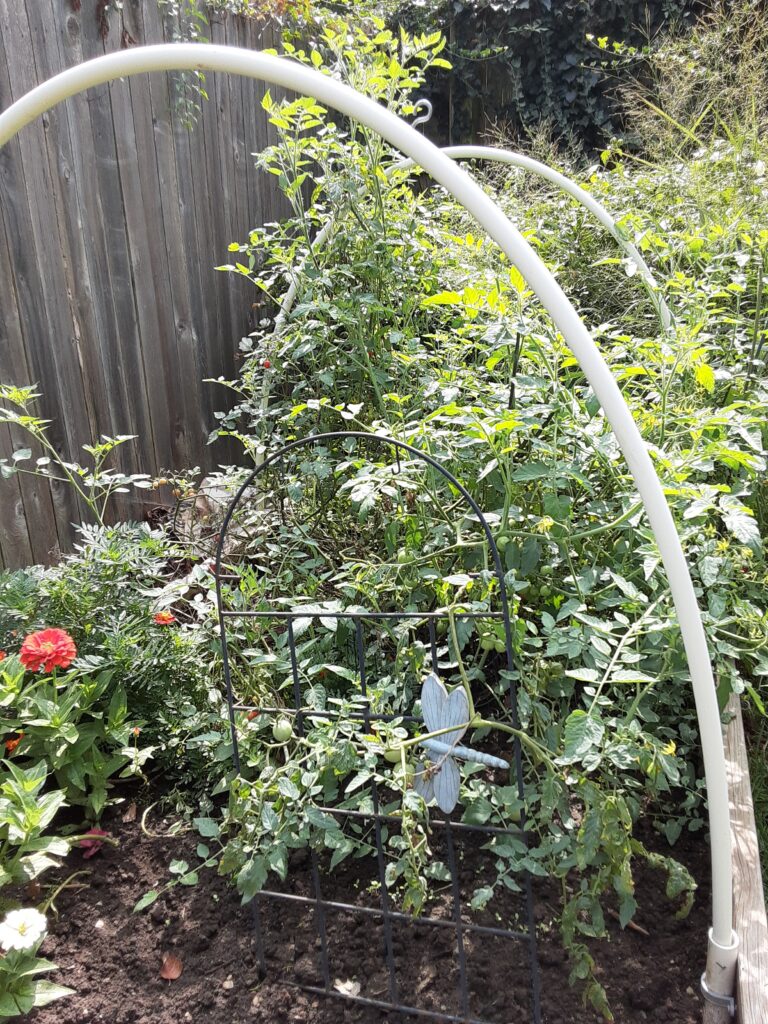
Like these tomatoes. Years ago I noticed a plant sprouting in a crack in the driveway, transplanted it, and look what happened. They’d take over the entire yard if I let them. Each year, more spout. Now there are a couple different varieties. Their yield is prolific, but the fruit is not especially flavorful.
I hope that as I learn more, I’ll become more confident about moving plants and cutting them back, and even killing them when necessary. When I move one plant and it dies, it feels tragic; if I move dozens, I’m bound to lose a few. It’s a lot like submitting fiction to magazines, come to think of it. Submitting in quantity can lessen failure’s inevitable sting. The stakes vary depending on the plant. Day lilies are pretty much expendable, but we’ve had a hydrangea for many years that I’m considering moving. A hydrangea this large would be expensive. I bought it and have watched it grow, so I feel some affection for it. I had a sudden idea that it would be happier underneath some juniper trees, where the conditions resemble this planting at the Kauffman Memorial Garden.
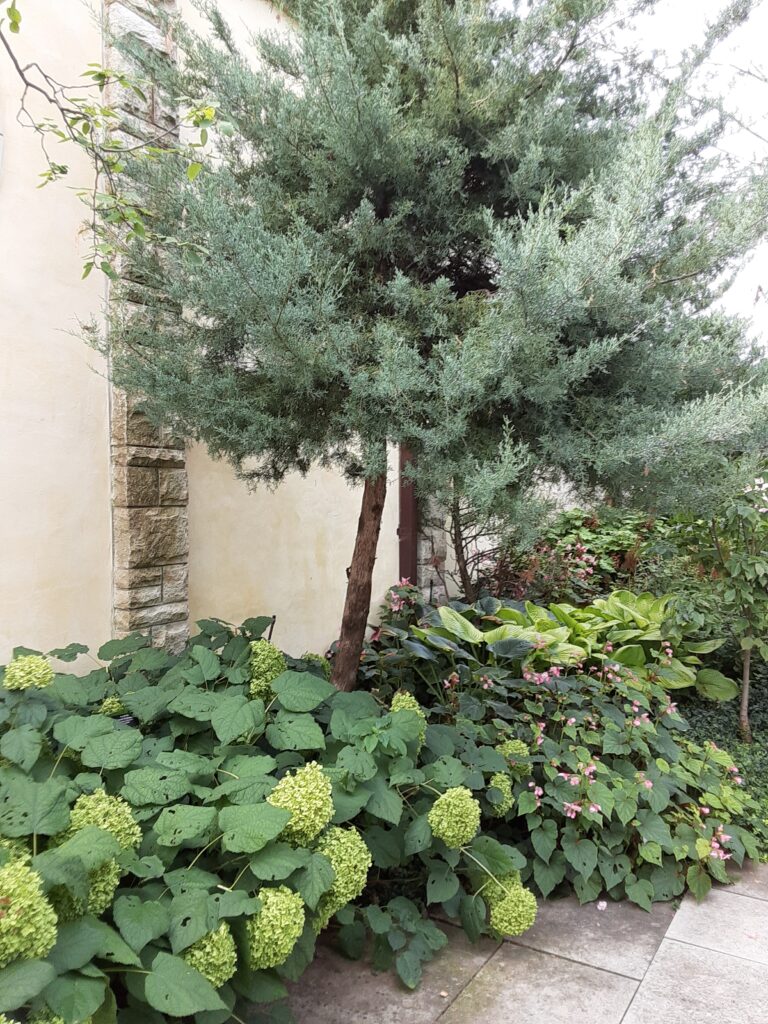
So far I’ve watched videos about transplanting hydrangeas online, read articles, asked a knowledgeable friend for advice, and taken pictures of the actual plant to Soil Service’s nursery to hear what they think. (They recommend waiting until November.) I’m doing my best to prepare for success, in other words. But eventually I’m just going to have to start digging.
I’ll let you know how it goes. My workaround for the bland tomatoes is to roast them (tossed with olive oil, salt and pepper, 350-degree oven, 10-15 minutes). If you want some seedlings when they sprout next year, just let me know.
